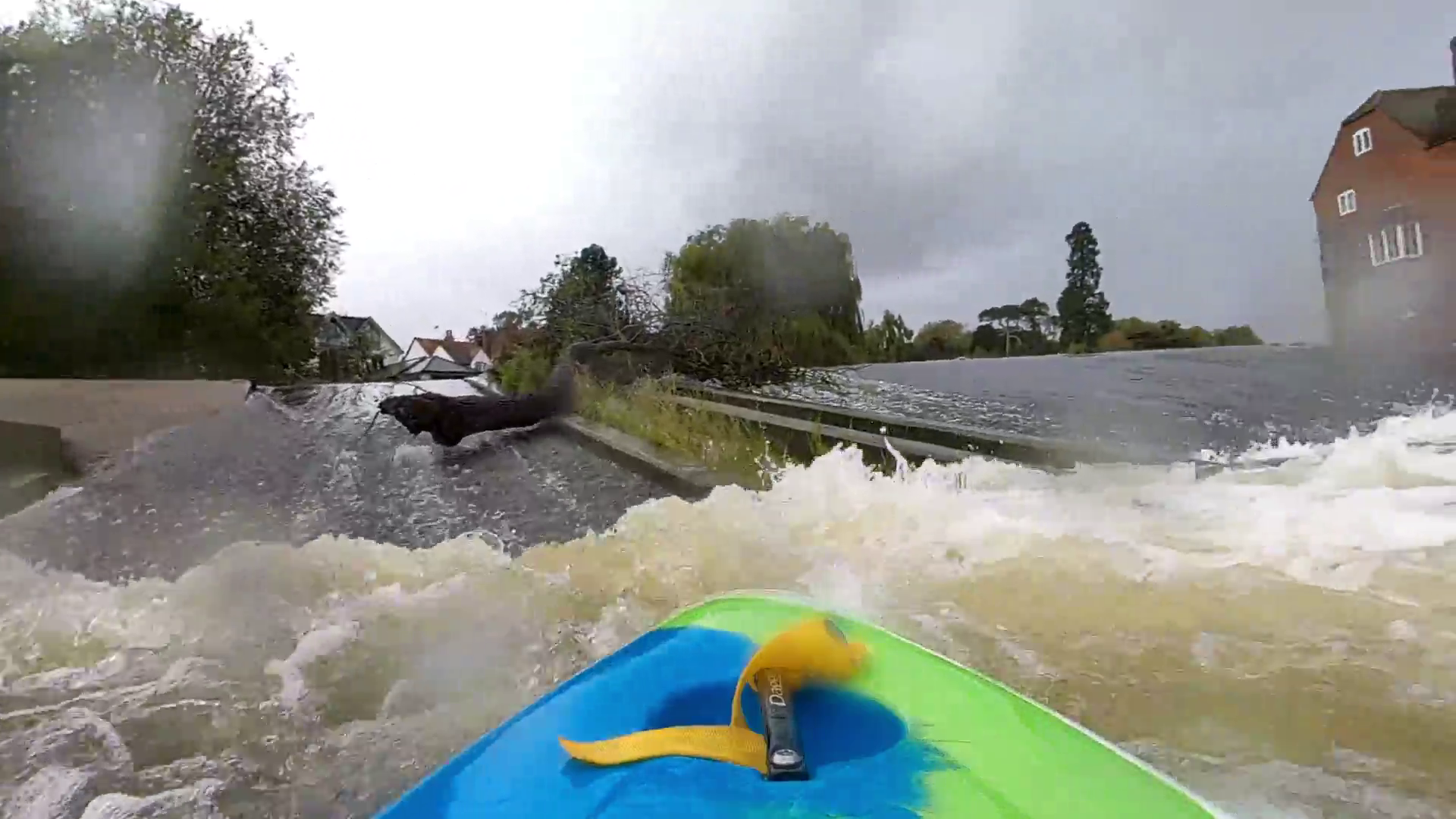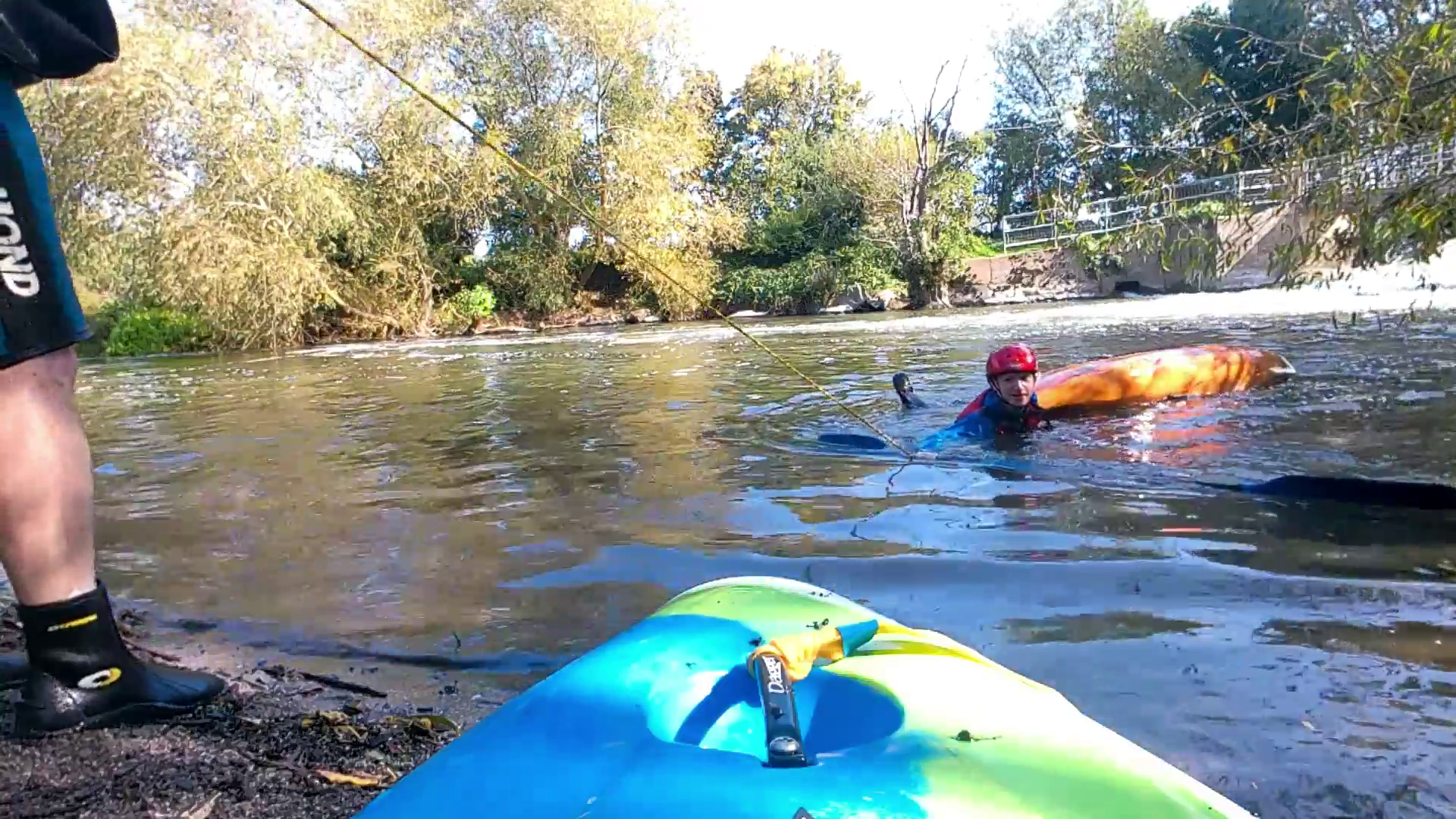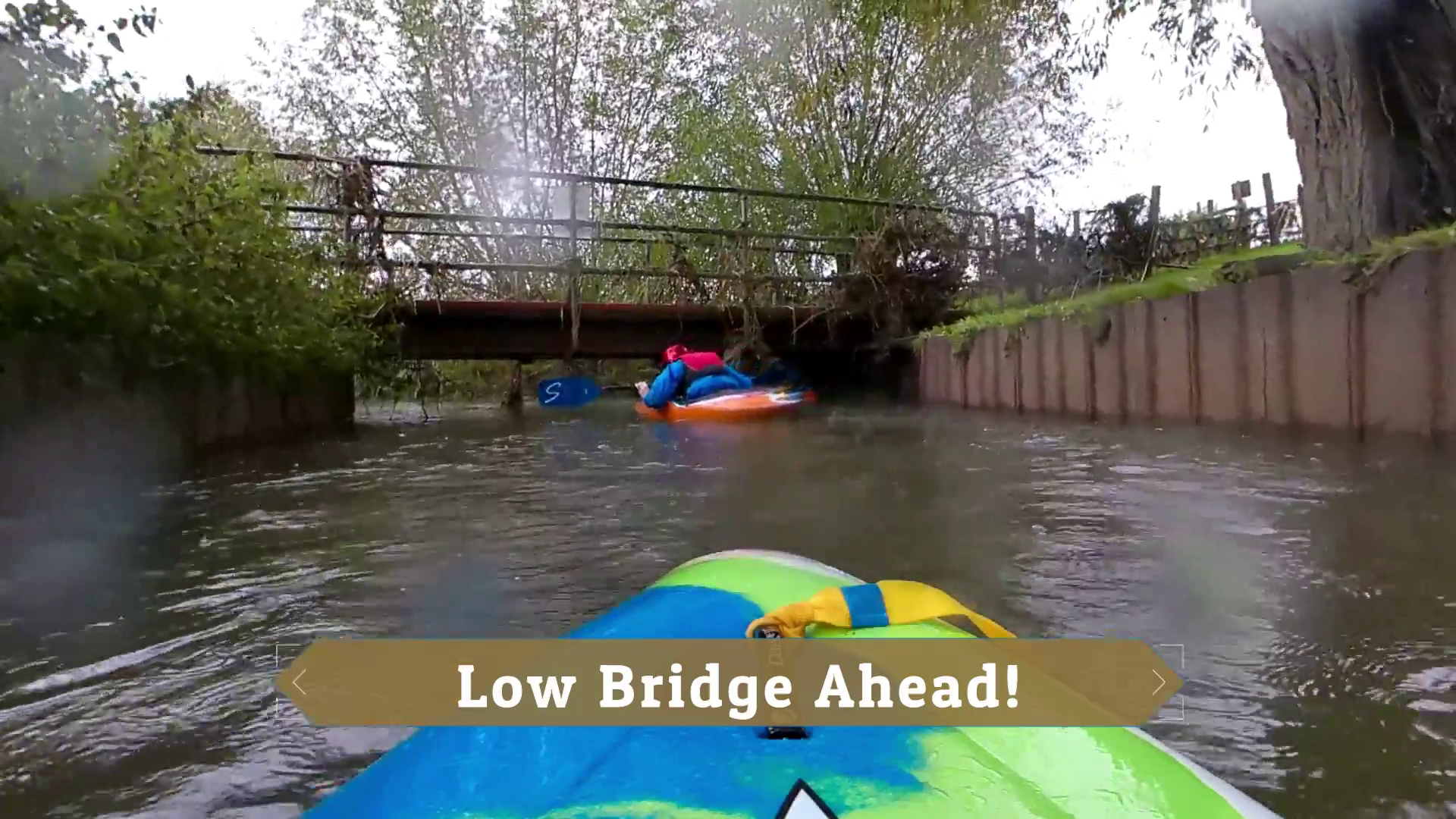How to stay safe when kayaking
- read now - it could save your life!
How to stay safe when kayaking - super important and obviously it could save your life.
Kayaking is fun and is open to all to enjoy and staying safe is of paramount importance.
Even a small lapse in judgement can lead to injury or even death to you or your group.
Here are 12 safety tips that you need to know to protect you and your group.
Tip 1 - Never paddle alone
The kayaking motto is:
'Less than three should never be'
Always make sure you are paddling with at least two other paddlers of similar ability to yourself.
This is important - they must of a similar ability (experience and skill level) to yourself. If they are a lower ability, you will end up being their safety cover and no one will be your safety cover.
 Take extra care when on white water
Take extra care when on white waterTip 2 - Be familiar with your equipment
Every piece of your equipment should be checked and practiced so you know exactly how to use it - and to use it without thinking.
Being familiar with your equipment gives you a head start in any rescue situation.
This includes not just your knife and whistle but also your kayak rescue lines/handles, your throw line and your buoyancy aid.
Tip 3 - Know where your equipment is
Time is of the essence in a rescue situation so you must know where you have stowed your equipment. Practice retrieving it to guarantee it will be available when you need it.
Tip 4 - Care for your equipment
After every paddle, check over your equipment and repair/replace if necessary. Dry it and stow it back in the correct place ready for next time.
Tip 5 - Practice your capsize drill
 Practice your capsize drill
Practice your capsize drillThe more times you can practice your capsize drill, the more proficient you will become at doing it.
Tipping over on a river is never easy and these practice sessions ensure you are used to it and able to perform it without panicking.
In addition, you can practice retrieving your kayak and paddle and swimming back to shore.
Tip 6 - Wear the right clothing for the weather
Dress for the water, not the weather. It might be super sunny, but the water could be cold.
Wear the maximum you can for the conditions you are paddling in. Shorts and a t-shirt might be ok for summer and a full drysuit for winter.
Side note: I have seen many examples of paddlers wearing too little kit and then complaining they are cold. When you are cold, your body is compromised and your actions and reactions will be impeded potentially putting you in a dangerous situation.
Tip 7 - Know your first aid
Basic first aid is essential when out paddling. Small cuts, bites and grazes will need to be treated at the scene to avoid infection and further problems.
Make sure you carry a first aid kit!
In addition, CPR (Link to more info) is a skill you need to know should someone in your group suffer a cardiac arrest.
Tip 8 - If in doubt, get out!
Sometimes your paddling trip takes a turn for the worse.
Perhaps the weather changes, maybe the river level increases, perhaps there are obstacles in the river, or even your group may feel unsafe or unable to continue.
At any point, on any paddling trip, you have to be ready to make the decision to stop and get safely get out.
It is better to skip it today so you can paddle it another day - when it is safer.
Side note: Peer pressure is a powerful motivator. You may feel it is unsafe to continue, but your mates are egging you to carry on. Stick to your decision and encourage them to do the same.
Tip 9 - Keep as dry as you can
Water is a transmitter of heat away from your body (much faster than air in fact).
Once you are wet, you will be leaking warmth and getting colder.
Wearing a drysuit, dry trousers or dry cag reduces the chances of your clothes getting wet and therefore you will stay warmer.
Also, if your clothes do get wet, change into dry clothes as soon as you can.
Tip 10 - Know your journey
Wherever you are paddling, make sure you have inspected the whole of the route on the day you are paddling it.
Conditions change and you need to be aware of these changes as well as exit points and links to roads for emergency extraction.
 A low bridge that would be impassable at higher river levels
A low bridge that would be impassable at higher river levelsTip 11 - Constantly inspect
As you are paddling, the river conditions could change - especially during rainy periods. Be vigilant and never be afraid of using Tip 8 above!
Tip 12 - Take a phone
Having a method to contact the emergency services is an important safety net for your trip.
Keep a fully charged phone in a waterproof pouch on your person (in case you are separated from your kayak).
Have fun and keep safe!
PS. Paddlesports can be dangerous.
Read our safety disclaimer - here

New paddling inspiration, tip, trip or technique video EVERY week! Watch Ed, Dave and Moo on their kayaking, canoe and SUP adventures. It's all about safely having fun on the water. 200,000+ views, 110+ videos & 900+ subscribers so far! Click below to start watching:
Ed & Dave Kayaking Youtube Channel
WANT TO HELP US?
We really value your visit to us today. We run this website and our Youtube channel to provide paddling inspiration, tips, trip and technique content to you. We love being out on the water! If you enjoyed your visit, you can support us by using the links below:
Buy us something on our wish list
Thank you
NEED WEB HOSTING?
We recommend IONOS. Great service, technical support and stable hosting. Click the link below to find out more:
IONOS Web Hosting - RECOMMENDED!



